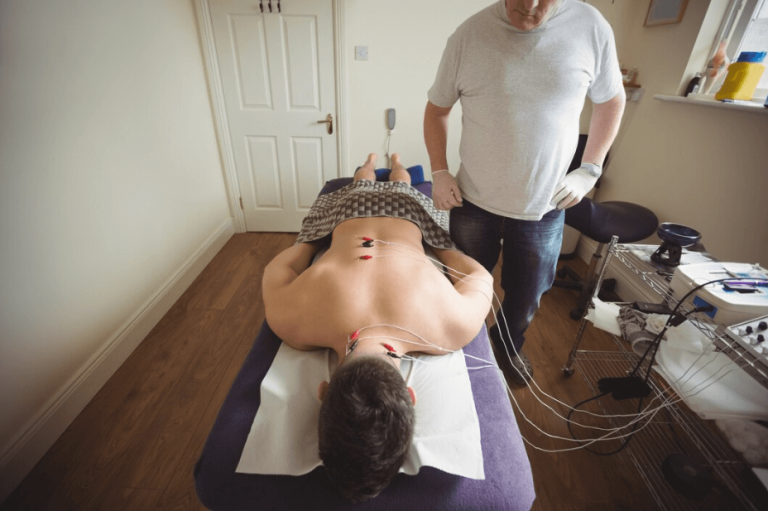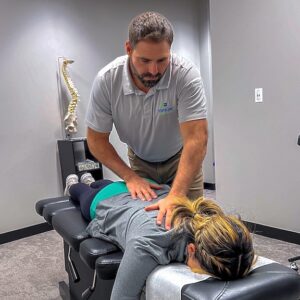Are you tired of dealing with the constant pain and discomfort of tendonitis? Soft wave therapy may be the solution you’ve been searching for.
This cutting-edge treatment has shown promising results in managing and treating a wide range of conditions, including plantar fasciitis, tennis elbow, rotator cuff injuries, carpal tunnel syndrome, and even erectile dysfunction.
But that’s not all – soft wave therapy has also been effective in reducing cellulite, alleviating myofascial pain syndrome, and aiding in the healing of stress fractures.
Intrigued? Well, keep reading to discover how this non-invasive therapy can provide you with the relief you’ve been longing for.
Tendonitis
Tendonitis can be effectively managed with soft wave therapy. If you’re suffering from tendonitis, you know the pain and discomfort it can cause. But there’s hope for relief. Soft wave therapy offers a non-invasive and effective treatment option for tendonitis management.
Soft wave therapy uses low-intensity sound waves to stimulate healing and reduce pain. These sound waves penetrate deep into the affected tendon, promoting blood flow and triggering the body’s natural healing response. This therapy can help reduce inflammation, relieve pain, and improve overall function.
One of the major benefits of soft wave therapy for tendonitis management is that it doesn’t require any medication or invasive procedures. It’s a safe and non-surgical treatment option that can be performed in the comfort of a medical office. The procedure is quick, with each session lasting about 15-20 minutes, and you can experience relief from pain and improved mobility after just a few sessions.
In addition to soft wave therapy, your healthcare provider may also recommend other conservative treatments for tendonitis management, such as rest, ice, compression, and physical therapy exercises. These complementary approaches can further enhance the effectiveness of soft wave therapy and promote a faster recovery.
Plantar Fasciitis
If you’re dealing with foot pain, there’s another condition that can be effectively managed with soft wave therapy: plantar fasciitis. Plantar fasciitis is a common foot condition that causes pain and inflammation in the plantar fascia, a thick band of tissue that connects the heel bone to the toes. It’s often characterized by a sharp, stabbing pain in the heel or arch of the foot, especially in the morning or after long periods of rest.
Soft wave therapy has been found to be an effective treatment for plantar fasciitis. This non-invasive procedure uses low-intensity sound waves to stimulate healing in the affected area. The sound waves promote increased blood flow, reduce inflammation, and stimulate the release of growth factors, which help to repair damaged tissue.
Soft wave therapy can help manage and reduce the chronic pain associated with plantar fasciitis. It can also improve mobility and function, allowing individuals to engage in their daily activities without discomfort. The treatment is typically performed in a series of sessions, and many patients experience significant relief after just a few treatments.
If you’re suffering from plantar fasciitis and are looking for an effective treatment option, soft wave therapy may be worth considering. Talk to your healthcare provider to determine if this treatment is right for you. Remember, managing chronic pain is possible, and soft wave therapy can provide relief and improve your quality of life.
Tennis Elbow
Tennis Elbow, also known as lateral epicondylitis, is a painful condition that affects the tendons in your elbow. It’s caused by repetitive motion or overuse of the forearm muscles, which leads to inflammation and microtears in the tendons. If you’re experiencing chronic pain and discomfort in your elbow, it’s essential to seek medical attention from a doctor who can properly diagnose and treat your condition.
One effective treatment option for tennis elbow is cold laser therapy. This non-invasive procedure uses low-level laser light to stimulate healing in the affected area. The cold laser helps reduce inflammation, improve blood circulation, and promote tissue repair. By targeting the damaged tendons in your elbow, cold laser therapy can provide relief from pain and accelerate the healing process.
Cold laser therapy has been found to be particularly beneficial for chronic pain conditions like tennis elbow. It can be used as a standalone treatment or in combination with other therapies such as physical therapy or medication. The treatment is painless and typically requires multiple sessions for optimal results. Your doctor will determine the appropriate treatment plan based on the severity of your tennis elbow and your individual needs.
If you’re suffering from tennis elbow, don’t let the pain hold you back. Consult a doctor to explore the potential benefits of cold laser therapy and find the relief you deserve.
Rotator Cuff Injuries
To effectively manage and treat rotator cuff injuries, seeking prompt medical attention is crucial. Rotator cuff injuries can cause chronic pain and limit your range of motion, making daily activities challenging. When you experience symptoms such as shoulder pain, weakness, or difficulty lifting objects, it’s essential to consult a healthcare professional for a proper diagnosis and treatment plan.
Treatment for rotator cuff injuries may vary depending on the severity and specific condition. In some cases, conservative approaches like rest, ice, physical therapy, and anti-inflammatory medications may be sufficient for healing and pain relief. However, more severe injuries may require surgical intervention to repair the damaged tissues.
During your consultation, your healthcare provider will evaluate your injury and determine the appropriate course of care. They may recommend soft wave therapy as part of your treatment plan. Soft wave therapy uses low-intensity sound waves to stimulate blood flow, promote tissue healing, and reduce pain. This non-invasive treatment option can be effective in managing chronic pain associated with rotator cuff injuries.
In addition to professional treatment, it’s important to follow any prescribed exercises and rehabilitation protocols to strengthen the muscles surrounding the shoulder joint and prevent future injuries. Taking care of your rotator cuff injuries promptly can lead to faster recovery and improved functionality.
Carpal Tunnel Syndrome
Carpal Tunnel Syndrome can cause numbness and tingling in your hand and fingers. It occurs when the median nerve, which runs through a narrow passage in your wrist called the carpal tunnel, becomes compressed. This condition can be quite debilitating, affecting your ability to perform everyday tasks and causing chronic pain.
Soft wave therapy is a non-invasive treatment that can provide relief and help manage the symptoms of Carpal Tunnel Syndrome. The gentle waves of energy delivered during the treatment stimulate blood flow and promote healing in the affected area. This therapy can also help relax the muscles and reduce inflammation, contributing to overall better health and wellness.
Soft wave therapy is a caring approach to treating Carpal Tunnel Syndrome, as it doesn’t require surgery or medication. It’s a safe and effective alternative for those who want to avoid invasive procedures or who haven’t found relief through traditional treatments. The therapy sessions are quick and convenient, allowing you to fit them into your busy schedule without disrupting your daily routine.
If you’re suffering from Carpal Tunnel Syndrome, soft wave therapy may be a suitable treatment option for you. Consult with a healthcare professional to determine if this therapy is right for you and take a step towards managing your chronic pain and improving your overall well-being.
Chronic Pelvic Pain
Chronic pelvic pain can be a persistent and debilitating condition that affects many individuals. If you’re one of the millions who suffer from this condition, you know how it can significantly impact your quality of life.
The good news is that soft wave therapy Rockford has shown promise in effectively treating and managing chronic pelvic pain.
Soft wave therapy, also known as shockwave therapy, uses high-frequency sound waves to stimulate the body’s natural healing processes. By targeting the affected area, these waves promote tissue regeneration, improve blood circulation, and reduce inflammation. The therapy is non-invasive and doesn’t require any medication or surgery, making it a safe and convenient option for managing chronic pelvic pain.
Studies have shown that soft wave therapy can provide relief for various underlying causes of chronic pelvic pain. It has been found effective in treating conditions such as endometriosis, pelvic inflammatory disease, interstitial cystitis, and pelvic floor dysfunction. The therapy helps reduce pain, improve mobility, and enhance overall well-being.
If you’re considering soft wave therapy for chronic pelvic pain, it’s essential to consult with a healthcare professional experienced in this treatment. They can assess your condition, determine the appropriate treatment plan, and guide you throughout the process.
Erectile Dysfunction
If you or your partner are experiencing difficulties in achieving or maintaining an erection, soft wave therapy offers a promising solution for managing erectile dysfunction. Erectile dysfunction, also known as impotence, is a common condition that affects men of all ages. It can be caused by various factors, including underlying health conditions, such as diabetes or heart disease, as well as psychological factors like stress or anxiety.
Soft wave therapy, also known as low-intensity extracorporeal shockwave therapy (LI-ESWT), is a non-invasive treatment option that has shown promising results in improving erectile function. During the procedure, low-intensity shockwaves are delivered to the penis, stimulating the growth of new blood vessels and improving blood flow. This increased blood flow can help men achieve and maintain erections more effectively.
Studies have shown that soft wave therapy can lead to significant improvements in erectile function, with some men experiencing long-term benefits. The treatment is generally well-tolerated, with minimal side effects.
It’s important to note that soft wave therapy may not be suitable for everyone, and it’s essential to consult with a healthcare professional to determine if it’s the right option for you.
Cellulite Reduction
To effectively reduce cellulite, consider incorporating soft wave therapy into your treatment plan. Soft wave therapy, also known as acoustic wave therapy or radial wave therapy, has shown promising results in reducing the appearance of cellulite. This non-invasive procedure uses low-intensity sound waves to stimulate collagen production, improve blood circulation, and break down fat cells.
During a soft wave therapy session, a handheld device is used to deliver acoustic waves to the affected areas of your body. These waves penetrate the skin, reaching the deeper layers where cellulite forms. By targeting the underlying causes of cellulite, such as poor blood circulation and weak collagen fibers, soft wave therapy can help improve the overall appearance of your skin and reduce the dimpled texture associated with cellulite.
One of the key benefits of soft wave therapy for cellulite reduction is that it’s a safe and painless procedure. Unlike surgical interventions or invasive treatments, soft wave therapy doesn’t require any downtime or recovery period. You can resume your daily activities immediately after each session.
While soft wave therapy can be an effective treatment for cellulite reduction, it’s important to note that results may vary. Multiple sessions may be needed to achieve optimal results, and maintenance treatments may be necessary to sustain the improvements. Consulting with a qualified healthcare professional is crucial to determine if soft wave therapy is suitable for you and to develop a personalized treatment plan.
Myofascial Pain Syndrome
Soft wave therapy offers effective relief for individuals suffering from Myofascial Pain Syndrome. This condition is characterized by chronic pain and discomfort in the muscles and soft tissues. It’s often caused by the formation of trigger points, which are hyperirritable knots in the muscles that can refer pain to other areas of the body. Myofascial Pain Syndrome can be debilitating and significantly impact daily activities.
Thankfully, soft wave therapy is a non-invasive and drug-free treatment option that can help manage this condition.
Soft wave therapy works by delivering acoustic waves to the affected areas of the body. These waves stimulate blood flow, promote tissue regeneration, and reduce inflammation. By targeting the trigger points, soft wave therapy helps to break up the knots and release tension in the muscles. This can result in immediate pain relief and improved range of motion.
The benefits of soft wave therapy for Myofascial Pain Syndrome are numerous. It can effectively reduce pain, improve muscle function, and enhance overall quality of life. Additionally, this treatment option is safe and well-tolerated, with minimal side effects. Soft wave therapy can be used as a standalone treatment or in combination with other therapies, such as physical therapy or medication, to provide comprehensive pain management.
If you’re suffering from Myofascial Pain Syndrome, consider exploring soft wave therapy as a viable treatment option. Consult with a healthcare professional to determine if this therapy is right for you. With its proven effectiveness and minimal risks, soft wave therapy can help alleviate your pain and improve your daily functioning.
Stress Fractures
Soft wave therapy can also be effective in managing stress fractures, a common injury characterized by small cracks in the bones due to repetitive stress or overuse. Stress fractures often occur in weight-bearing bones, such as the tibia or metatarsals, and are commonly seen in athletes and individuals who engage in activities that involve repetitive impact, such as running or jumping.
Soft wave therapy works by delivering high-energy acoustic waves to the affected area. These waves stimulate the body’s natural healing response, increasing blood flow and promoting the formation of new bone tissue. The therapy also helps to reduce pain and inflammation associated with stress fractures.
One of the advantages of soft wave therapy in Rockford for stress fractures is that it’s a non-invasive and non-surgical treatment option. This means that it can be used as a first-line treatment, avoiding the need for more invasive procedures. It’s also a relatively quick and convenient treatment, with sessions typically lasting between 15 to 30 minutes.
Soft wave therapy can be an effective management option for stress fractures, helping to accelerate the healing process and alleviate symptoms. However, it’s important to consult with a healthcare professional to determine if soft wave therapy is suitable for your specific condition and to develop a comprehensive treatment plan.
In conclusion, soft wave therapy is a versatile treatment option that can effectively manage and treat a range of conditions. From tendonitis and plantar fasciitis to erectile dysfunction and cellulite reduction, this therapy offers potential relief and improvement. Its non-invasive nature and ability to target specific areas make it a popular choice for individuals seeking pain relief and overall wellness. Consider soft wave therapy as a viable option for managing various conditions and improving your quality of life.
Why Choose Us?
Evolve Chiropractic of Rockford offers cutting-edge soft wave therapy in Rockford, setting a new standard in holistic healthcare. Our skilled chiropractors leverage advanced soft wave technology to provide targeted and effective treatments, promoting natural healing and wellness. At Evolve Chiropractic, we prioritize individualized care, tailoring our services to meet the unique needs of each patient. Experience the next level of chiropractic care with our dedicated team, committed to helping you achieve optimal health and vitality.
2606 Broadway #1a, Rockford, IL 61108, United States
(815) 397-7259
https://myevolvechiropractor.com/chiropractor-in-rockford-il





